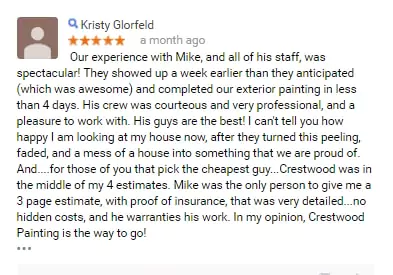Set Expectations
3 Things: Inclusions, Exclusions and Clarifications. This foundation outlines exactly what will be done and how it will be done.

The Importance of Clarity
A well-defined agreement eliminates misunderstandings between the homeowner and the painting contractor. This approach helps everyone know what to expect in terms of scope, cost, and timeline. When all parties understand the plan, there’s far less chance of mismatched expectations or unpleasant surprises.
On the Same Page
Even the smallest assumptions can lead to big frustrations if they’re never discussed. In most cases, issues arise not because someone is cutting corners, but because an important detail was never clarified. When you’re focused on what makes a good painting agreement, remember that open communication and thorough documentation are key.
A job well specified is half delivered
The Top 3: Inclusions, Exclusions, Clarifications
A solid agreement covers three main areas
- What’s included
- What’s not included
- Any unique situations that could affect the job
By labeling each category, both the contractor and the homeowner can quickly see exactly which tasks are on the table. This level of detail is essential for how to have a great painting contract.
Define the Work
Every good plan starts with defining exactly what will be done—whether that involves painting the house body and trim or specifying the products and number of coats. Setting clear responsibilities, timelines, and materials helps ensure a smooth workflow. When you think about how to have a great painting contract, remember that clarity in the scope of work is a top priority.
Inclusions
Inclusions spell out precisely what tasks the painter will handle, such as scraping loose paint, spot-priming bare wood, or protecting areas not meant to be painted. By listing these details, you minimize confusion and create a reliable roadmap for the project. A good example might read:
“Paint all previously painted doors, windows, fascia, soffits, and porch ceilings.”
Exclusions
Exclusions clarify what is off-limits, such as fences, mailboxes, doghouses, and gazebos. This helps avoid unintended paint jobs on items you never meant to change. Even if it seems obvious, putting it in writing ensures no one has to guess, preventing future disappointment or extra costs.
Avoiding Gray Doghouses
It may sound silly, but you don’t want to discover a beloved white doghouse has suddenly turned gray. By stating “exclude doghouse” in the agreement, everyone stays on the same page about what gets painted—and what doesn’t.
Clarifications
Clarifications address all the “what if” scenarios that might come up. These can include concerns about delicate landscaping, open windows during power washing, or whether the homeowner or the painter will move furniture. If there’s any nuance or potential complication, it should be spelled out in this section.
The Top 3 Gotta Haves - Inclusions, Exclusions, Clarifications
Windows Closed
Sometimes, it’s the smallest details that cause the biggest issues. Keeping windows closed during painting or washing is a perfect example. When you write it into the agreement, you eliminate the guesswork that can lead to an accidental mess inside the home.
Communication
Clear, proactive communication is at the heart of how to have a great contractor experience. Before work starts, both parties should discuss equipment storage, pet safety, gate access, and anything else relevant to the job. This ensures everyone knows the plan and feels comfortable from day one.
Suggestions
Some tasks are often best handled by the homeowner ahead of time:
- Removing valuables and fragile items from the work area
- Trimming plants or shrubs that may block the painter’s access
- Keeping pets secured
- Ensuring outdoor water and electrical outlets are accessible
Once these are done, the job can begin smoothly.
Before Work Begins
A quick walkaround with your contractor provides a chance to confirm final color choices and finishes. If you’re still uncertain about which questions to ask, take a look at 12 Questions to Ask Before You Hire a Painter for additional guidance. This extra preparation makes the first day on-site far less stressful.
The First Day
When the crew arrives, they’ll outline their immediate tasks, such as pressure washing, masking, or initial prep. This short briefing sets a cooperative tone and reassures you that the team is organized. If you have any last-minute concerns, share them right away so everyone can plan accordingly.
Tentative Start Date
Scheduling may shift because of weather, job delays, or other unforeseen circumstances, so being flexible is crucial. Stay in regular contact about any changes to the timeline. Solid communication keeps the project on track and reduces stress on both sides.
Protect Everyone
When expectations are clearly defined, it protects the homeowner, the crew, and the quality of the final result. Having a written record of everything from paint brands to touch-up responsibilities removes guesswork. It also fosters mutual respect, which is essential for what makes a good painting agreement.
A Clear Agreement Helps Everyone
A thorough painting agreement is more than just “paperwork.” It sets the tone for a respectful, efficient working relationship. In many ways, it’s the blueprint for a successful project and a key to how to have a great painting contract.
It’s More Than a Legal Document
A painting agreement isn’t only about covering legal bases—though that’s part of it. More importantly, it’s about communicating exactly what will happen, when it will happen, and what each party should expect. That clarity is why a well-structured contract is one of the best ways to ensure how to have a great contractor experience.


